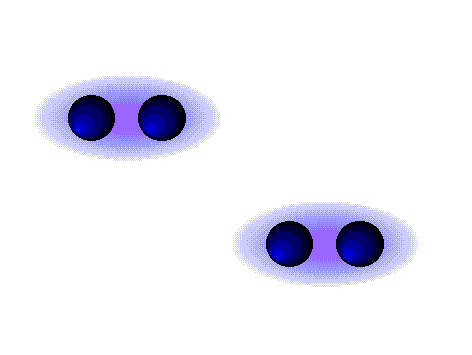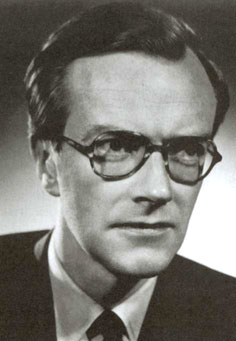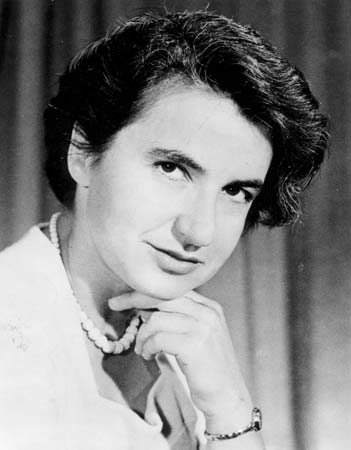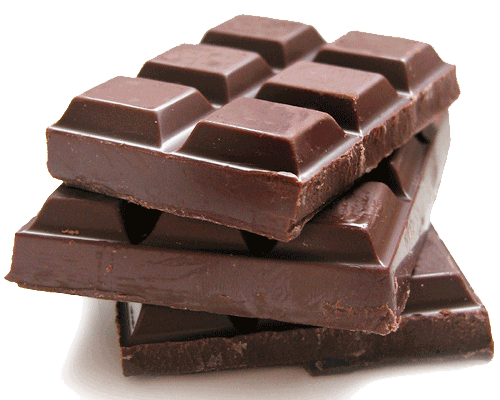1.
Thomas Hunt Morgan
(September 25, 1866 – December 4, 1945)
was an American evolutionary biologist, geneticist and embryologist and science author who won the Nobel Prize in Physiology or Medicine in 1933 for discoveries relating the role the chromosome plays in heredity.
Morgan received his PhD from Johns Hopkins University in zoology in 1890 and researched embryology during his tenure at Bryn Mawr. Following the rediscovery of Mendelian inheritance in 1900, Morgan's research moved to the study of mutation in the fruit fly Drosophila melanogaster. In his famous Fly Room at Columbia University Morgan was able to demonstrate that genes are carried on chromosomes and are the mechanical basis of heredity. These discoveries formed the basis of the modern science of genetics. He was the first person to be awarded the Nobel Prize in Physiology or Medicine for his work in genetics.
During his distinguished career, Morgan wrote 22 books and 370 scientific papers,and, as a result of his work, Drosophila became a major model organism in contemporary genetics. The Division of Biology he established at the California Institute of Technology produced seven Nobel Prize winners.
2.
Hershey & Chase
The Hershey–Chase experiments were a series of experiments conducted in 1952 by Alfred Hershey and Martha Chase, confirming that DNA was the genetic material, which had first been demonstrated in the 1944 Avery–MacLeod–McCarty experiment. While DNA had been known to biologists since 1869, most assumed at the time that proteins carried the information for inheritance.
Hershey and Chase conducted their experiments on the T2 phage, a virus whose structure had recently been shown by electron microscopy.The phage consists of a protein shell containing its genetic material. The phage infects a bacterium by attaching to its outer membrane and injecting its genetic material and leaving its empty shell attached to the bacterium.
In their first set of experiments, Hershey and Chase labeled the DNA of phages with radioactive Phosphorus-32 (the element phosphorus is present in DNA but not present in any of the 20 amino acids from which proteins are made). They allowed the phages to infect E. coli, and through several elegant experiments were able to observe the transfer of P32 labeled phage DNA into the cytoplasm of the bacterium.
In their second set of experiments, they labeled the phages with radioactive Sulfur-35 (Sulfur is present in the amino acids cysteine and methionine, but not in DNA). Following infection of E. coli they then sheared the viral protein shells off of infected cells using a high-speed blender and separated the cells and viral coats by using a centrifuge. After separation, the radioactive S35 tracer was observed in the protein shells, but not in the infected bacteria, supporting the hypothesis that the genetic material which infects the bacteria was DNA and not protein.
Hershey shared the 1969 Nobel Prize in Physiology or Medicine with Chase for their “discoveries concerning the genetic structure of viruses.”
3.
Frederick Griffith
Frederick Griffith (c. 1879 - 1941) was a British scientist whose focus was microbiology, especially as to the epidemiology and pathology of bacterial infectious disease. In 1927, in London, at the Ministry of Health, he conducted what is now known as Griffith's Experiment. Published in 1928 by the Journal of Hygiene, his paper carries the first widely accepted demonstrations of bacterial transformation, whereby a bacterium can distinctly change its form and function. The phenomenon was then attributed to an unidentified transforming principle or transforming factor.
In his experiments, Streptococcus pneumoniae, known medically "Streptococcus pneumoniae (page 1) Todar's Online Textbook of Bateriology was induced by various means to transform from one strain into a different strain, previously held to be of separate evolutionary lineage. These findings stood to significantly revise prevailing interpretations of pneumonia epidemiology.
The findings prompted Oswald T. Avery, in New York at the Hospital of the Rockefeller Institute of Medical Research, where America's pneumococcal research was centered, to speculate that Griffith had failed to apply adequate controls. Known as a cautious and thorough researcher, and further as a reticent individual, however, Fred Griffith's tendency was to submit for publication only findings that he believed truly significant to science, and so his transformation findings endured.
4.
Erwin Chargaff
Erwin Chargaff (Czernowitz, August 11, 1905 – New York City, USA, June 20, 2002) was an American biochemist who emigrated to the United States during the Nazi era. Through careful experimentation, Chargaff discovered two rules that helped lead to the discovery of the double helix structure of DNA.
Chargaff had one son, Thomas, with his wife Vera Broido, whom he married in 1928. Chargaff became an American citizen in 1940.
5.
Maurice Wilkins and Rosalind Franklin
The discovery of the structure of DNA in 1953 revealed the physical and chemical basis of how characteristics are passed down through the generations and how they are expressed in individual organisms.
Maurice Wilkins and Rosalind Franklin, together with Ray Gosling, Alec Stokes and Herbert Wilson and other colleagues at the Randall Institute at King's, made crucial contributions to the discovery of DNA's structure in 1953.
Wilkins began using optical spectroscopy to study DNA in the late 1940s. In 1950 he and Gosling obtained the first clearly crystalline X-ray diffraction patterns from DNA fibres, and Alec Stokes suggested that the patterns indicated that DNA was helical (spiral) in structure. Rosalind Franklin came to King's in early 1951 and that summer she took the famous 'Photo 51' and made important studies of the DNA molecule. When Francis Crick and James Watson of Cambridge University obtained this photo, together with some of Franklin's data in the report of an MRC visit to King's, they were able to use this with their own deductions to build the first correct model of the DNA molecule. Their famous paper in Nature (April 1953) was accompanied by a paper by Wilkins, Stokes and Wilson, and another by Franklin and Gosling.
This was the beginning of a further seven years of work for Maurice Wilkins and his colleagues to check and verify Crick and Watson's hypothetical model. It was for this, as well as his original X-ray diffraction studies, that Wilkins was awarded the Nobel Prize for Physiology or Medicine with Crick and Watson in 1962. Rosalind Franklin died of cancer at the age of 37 in 1958.
The College's researchers continue to play an internationally important role in the scientific developments which have spiralled out of the DNA discovery. The College's largest building at the Waterloo Campus is named after Franklin and Wilkins.
6.
Watson & Crick
Francis Crick was born on June 8, 1916 in Northampton, England, into a middle-class family. He began doing science experiments in his home when he was ten years old. He graduated with a degree in Physics from University College in London.
James Watson was born on April 6, 1928 in Chicago, and at the age of 15 enrolled in Chicago University and majored in zoology. He received a Ph.D. in genetics from Indiana University, when he was 22 years old. In 1951, he joined Francis Crick at Cavendish Laboratory in Cambridge, England. He was only 23 years old when his greatest discovery was made.
Linus Pauling's work on the structure of biomolecular and hydrogen bonding formed the basis of Crick and Watson's study of DNA. Speaking of Pauling's work, Watson stated,
"In 1931, when he was 30, Linus Pauling knew he was the world's best chemist. Ten years later his peers agreed. By then, The Nature of the Chemical Bond (1939) was already on its way to becoming the most influential chemistry book of the century. His biggest biological success came from his 1951 proposal of the alpha-helical fold for protein molecules, which everybody else thought were too large and complex to study. Then, unexpectedly, he struck out when he proposed an implausible, three-chain helix for DNA. Several months later, in Cambridge, England, Francis Crick and I, apprehensive that Linus might bat again, found the double helix. Why Linus failed to hit this home run will never be known. I most remember Pauling from 50 years ago, when he proclaimed that no vital forces, only chemical bonds, underlie life. Without that message, Crick and I might never have succeeded."
In 1953, James Watson and Francis Crick discovered the molecular structure of DNA. Underplaying their discovery, in a letter to scientist Max Delbruck, James Watson wrote,
"In the next day of so, Crick and I shall send a note to Nature proposing our structure as a possible model. If by chance it is right, then I suspect we will be making a slight dent into the manner in which DNA can reproduce itself. I prefer this type of model over Pauling's which if true, tells us next to nothing about the essence of DNA reproduction."




























